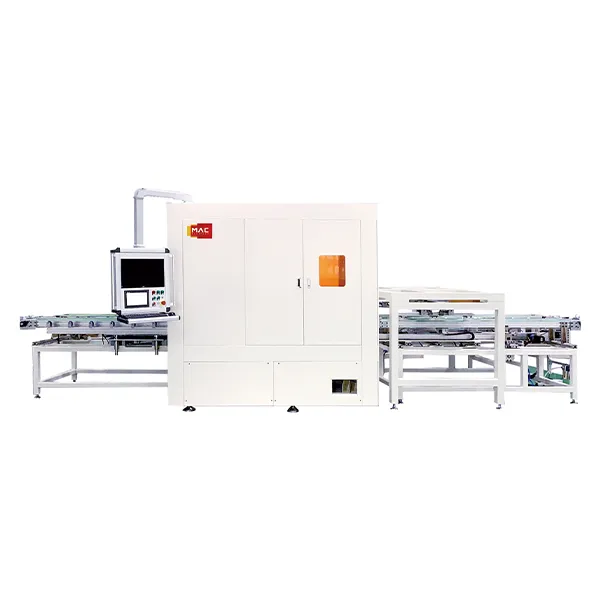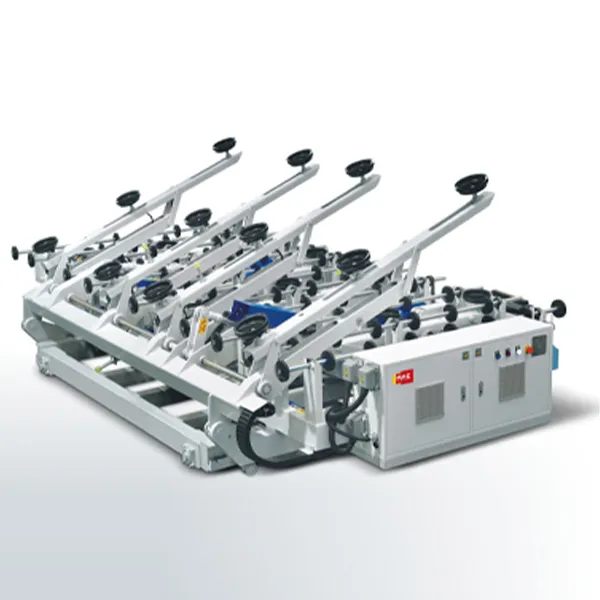Advancing Manufacturing Precision with Smart Cutting Technologies
In today's precision-driven industries, choosing the right cutting method plays a vital role in ensuring quality, safety, and cost-efficiency. With increasing demand for accuracy and clean edges in various materials, both waterjet cutting and laser cutting have emerged as leading technologies. While each technique offers specific benefits, waterjet cutting continues to gain attention due to its versatility, safety, and ability to process a broad range of materials without thermal damage.
How Waterjet Cutting Works
Cold Cutting Process Preserves Material Integrity
Waterjet cutting utilizes a high-pressure stream of water, sometimes combined with abrasive particles like garnet, to cut through metal, stone, ceramics, composites, and more. Unlike traditional cutting methods that generate heat, waterjet cutting is a cold process. This is especially beneficial for materials sensitive to heat, such as plastics, laminates, and hardened metals, as it avoids distortion or molecular changes.
The ability to maintain the structural integrity of the material makes waterjet cutting highly valuable in aerospace, automotive, medical device manufacturing, and artistic applications.
Adaptability Across Thickness and Material Types
One of the most significant advantages of waterjet cutting is its flexibility. It handles everything from thin foils to thick slabs, often in the same session without changing tools. Whether cutting stainless steel sheets, thick aluminum plates, or brittle glass, waterjet cutting ensures a consistent finish with minimal edge roughness.
This adaptability is ideal for custom or small-batch production environments that deal with varying material types and dimensions.
Laser Cutting Technology Overview
High-Speed Processing for Thin Materials
Laser cutting involves directing a focused beam of light to melt, burn, or vaporize the target material. It excels at producing intricate patterns and is particularly effective for thin sheet metals, wood, and polymers. Laser machines typically offer faster cutting speeds than waterjet cutting, making them a strong choice for mass production involving simple geometries.
However, laser cutting works best on materials under a certain thickness—often below 25 mm. Beyond this limit, performance and cut quality can decline.
Heat-Affected Zones Require Additional Consideration
Since laser cutting relies on heat, it creates a heat-affected zone (HAZ) around the cut, which may alter the properties of the material. This can be problematic for precision parts where structural integrity is critical. Furthermore, some materials release hazardous fumes during laser cutting, necessitating proper ventilation and protective equipment.
In contrast, waterjet cutting produces no fumes, burns, or toxic gases, which makes it safer and cleaner in many industrial settings.

Comparing Accuracy in Waterjet and Laser Cutting
Dimensional Precision and Tolerances
Waterjet cutting offers high accuracy with typical tolerances of ±0.1 mm. Because there’s no thermal stress, parts do not deform or require corrective reshaping. The fine kerf (cut width) enables the creation of tight-fitting parts and intricate designs, even in thick materials.
Laser cutting also provides impressive accuracy, often slightly tighter on very thin materials. However, for thicker materials or composites, the edge quality and dimensional reliability of waterjet cutting can be superior due to the absence of heat effects.
Edge Quality and Post-Processing
Edge finish is another important factor. Waterjet cutting usually produces smooth, burr-free edges that require little or no post-processing. The technique can cut sharp internal corners and detailed contours without compromising on surface quality.
Laser cutting can leave melted edges or dross, especially on thicker or reflective materials like copper and brass. This can lead to more time spent on finishing work, increasing overall production cost and time.
Evaluating Safety in Cutting Operations
Operator and Environmental Safety with Waterjet Cutting
Waterjet cutting is considered safer in industrial environments. The process does not generate sparks, radiation, or airborne toxins. It reduces the risk of fire hazards, making it suitable for facilities working with flammable materials. Moreover, noise and vibration levels are manageable with proper system enclosures and damping measures.
Because waterjet systems use water and abrasive media, operators are only exposed to minimal physical risks when proper protective gear and protocols are followed.
Laser Safety Measures and Limitations
Laser cutting requires strict safety controls. The high-energy beam can cause serious burns or eye injuries if mishandled. Operators must use protective eyewear and be trained in emergency procedures. Additionally, laser systems can generate harmful fumes from certain materials, demanding well-ventilated environments and air purification systems.
While modern laser machines incorporate safety interlocks and automatic shutdowns, the level of inherent risk is still higher compared to waterjet cutting.
When to Choose Waterjet Cutting Over Laser
Complex Materials and Non-Thermal Applications
Waterjet cutting is ideal when working with thick, layered, or heat-sensitive materials. For example, cutting carbon fiber, laminated glass, or food-grade plastics is far more efficient and safe with waterjet cutting. It is also preferred in industries where environmental sustainability and operator safety are high priorities.
The cold cutting process reduces emissions and energy consumption, aligning with green manufacturing goals.
Unique Manufacturing Needs and Prototyping
For manufacturers that handle diverse projects, waterjet cutting provides unmatched flexibility. Rapid prototyping, custom jobs, and one-off components benefit from the technique's ability to accommodate quick material changes and design adjustments without extensive setup.
Companies that offer customized engineering services often rely on waterjet cutting to fulfill complex specifications while maintaining high accuracy.
FAQ
What materials are best suited for waterjet cutting?
Waterjet cutting works well on metals, composites, stone, ceramics, rubber, plastics, and even food products. It is especially useful for thick or heat-sensitive materials.
Is waterjet cutting more accurate than laser cutting?
Both offer high precision, but waterjet cutting tends to deliver better results on thicker or composite materials due to the absence of thermal distortion.
Are there safety risks with waterjet cutting?
Waterjet cutting is generally very safe. It avoids heat, sparks, and harmful fumes, though operators should still follow guidelines for handling high-pressure systems.
How do I decide between waterjet and laser cutting?
Choose waterjet cutting if your application involves thick, delicate, or diverse materials. Opt for laser cutting when speed and fine detail on thin materials are the priority.
 EN
EN
 AR
AR
 BG
BG
 HR
HR
 CS
CS
 DA
DA
 NL
NL
 FI
FI
 FR
FR
 DE
DE
 EL
EL
 HI
HI
 IT
IT
 JA
JA
 KO
KO
 PL
PL
 PT
PT
 RO
RO
 RU
RU
 ES
ES
 SV
SV
 TL
TL
 IW
IW
 LV
LV
 LT
LT
 SK
SK
 SL
SL
 UK
UK
 VI
VI
 ET
ET
 HU
HU
 MT
MT
 TH
TH
 TR
TR
 FA
FA
 MS
MS
 SW
SW
 GA
GA
 AZ
AZ
